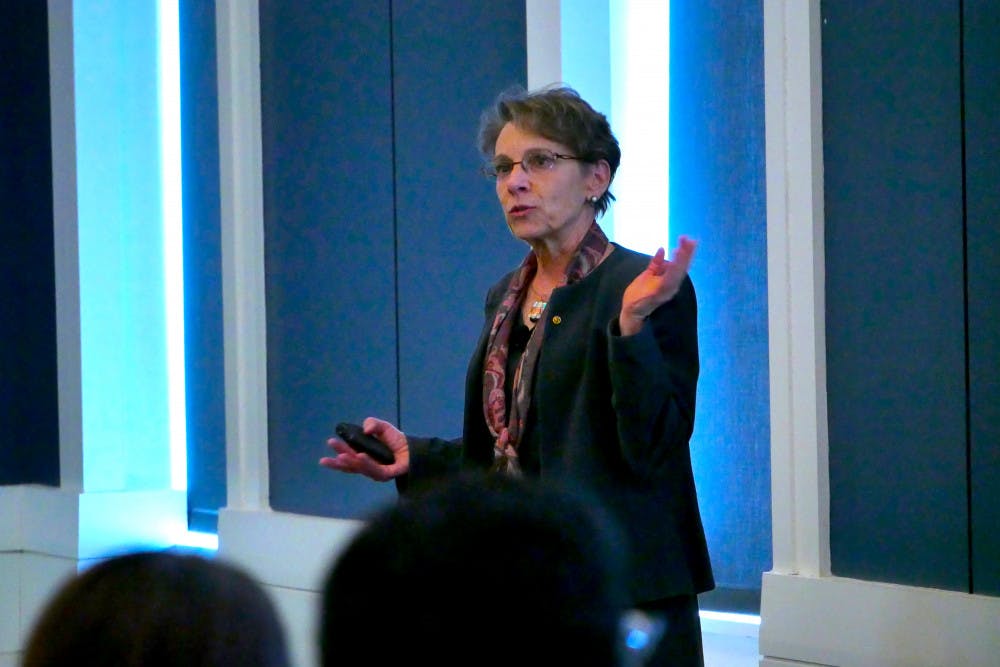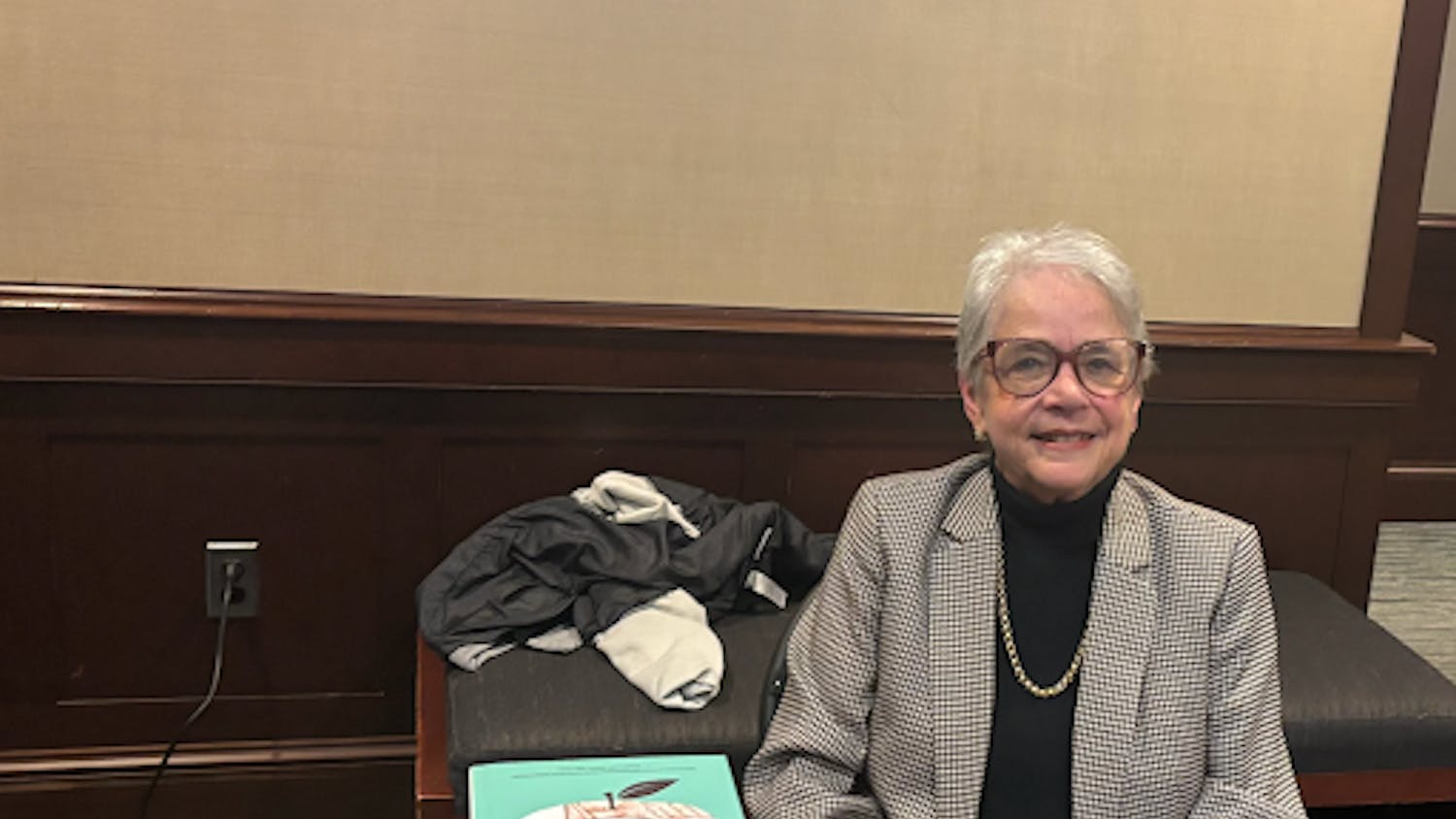By Sumayah Medlin
Staff Writer
College President Kathryn Foster invited students and staff to a discussion regarding the Fiscal Year 2020 budget. It was held in the Education Building Room 212 on April 2 from 3:30 p.m. to 4:30 p.m.
For the first time in College history, the budget was made accessible to the public via an open forum, according to Foster. Though the budget is not complete, Foster described the discussion as an opportunity for student and faculty input.

Foster acknowledged the financial pressure on colleges to make tuition less expensive, and to reduce the amount of student debt. The book, “Demographics and the Demand for Higher Education” by Nathan D. Grawe, highlights the pressures colleges and universities are under because of high tuition costs as college becomes less and less affordable, she explained.
The College’s tuition is one of the highest among the four year public colleges in New Jersey, according to Foster. This results in high debt –– an average of $37,000 per student.
While Foster acknowledged that tuition has been increasing, she stressed that there is still a demand for higher education and that college is still worth the money.
The FY19 fiscal budget started July 1, and ends June 30, meaning that as of Foster’s presentation, the total revenues and expenditures are subject to change. The FY2020 budget is yet to be complete, and the presentation also served as an opportunity for suggestions and other input.
Foster put the FY20 budget in context by expressing the specific circumstances that account for the budget. She said that some of the many areas the budget covers includes an increase in financial aid, a tuition discount from 13 to 14.5 percent, a $340 million debt, increased demand for mental health services, upgraded housing, diversity and inclusivity and stagnant or declining state funding.
Foster divided the presentation into four parts — budget context, premises and principles, building the FY20 budget and the future set-up of the FY 2020 budget.
Some of the premises and principles for Foster were to be transparent and invite input from the public, make choices for the future fiscal-year budget and to align choices with institutional priorities. These priorities include student success, financial sustainability and the College’s national reputation, according to Foster.
One of the goals is to minimize the percentage of the operating budget that is used to pay off past debt. Twelve percent is currently reserved to pay back debt, and the goal is to get it to 10 percent or lower. The budget is divided into the operating, auxiliary, reserves, endowment and full time employment. The operating budget is comprised of undergraduate and graduate enrollment, net tuition, state appropriations and fringe benefits appropriations. In the past five years, the College’s tuition has gone up 13.6 percent, the undergraduate enrollment has increased by 4.95 percent and graduate enrollment decreased by 10.8 percent.
The FY19 operating budget is $188 million. As of Foster’s presentation, the 2020 operating budget is not available.
Part of the budget is based on an assumption that the state will give the College a certain amount of money. However, Foster explained that because the College is small, it is harder to get as much money as larger schools do, such as Rutgers University.
Foster implied that if the College had received more funding from the state, then maybe it would be more financially able to fulfill other student and faculty requests.
Assistant Campus Architect Linda Strange asked if the College knows why it did not receive the funding it requested from the state. Foster explained that there are three conditions that determine how much funding schools get — the number of degrees completed, the amount of degrees completed by African-American and Latino students and the number of enrollments eligible for financial aid.
Foster called state funding “a political process.” Even if the College gets a higher percentage of degrees completed than a larger school, the larger school is still more likely to get more funding.
According to Foster as of now, the revenue totaled at $250.3 million in 2019, with tuition and fees being the most accountable at 46 percent, and the College Foundation support being the least accountable at one percent.
The 2019 expenditures were at $242 million, with compensation being the highest expenditure at 61 percent, and IT hardware and software and library acquisitions being the least accountable at one percent each.
The FY20 budget is based on givens and assumptions, Foster explained. For example, an assumption is the number of incoming freshman expected, and a given is that compensation is up $4.2 million over the FY19 budget at $147.3 million.
The FY20 total revenue is expected to be $256,200,828 and its expenditures are anticipated to be $258,064,270. In other words, there is a projected deficit of about $2 million. Similar to the FY19 budget, most of the revenue comes from tuition, with tuition being on a steady incline for the past five years, and most of the expenditures go toward compensation.
Foster told the audience that her budget wish list is primarily based off of student concerns, which includes faculty concerns in high-demand areas such as math and computer science, web developers, graduate education, campus security, mental health support, first year experiences and advising. However, as she stated, there are certain levers that she can pull to stay on budget and satisfy the concerns in these areas, such as potentially raising tuition or doing an employee headcount.
Foster concluded by listing the next steps for finalizing the budget; she wants to refine assumptions so that the school can stay on budget.
Wilbert Casaine, executive director of financial aid and student success, noticed that in the budget, there was no funding reserved for transfer students.
Foster responded by saying that since the College has such high retention rates, there is not much room for transfers to come in and take up space but that that decision might have negative consequences down the line.
“We may be missing opportunities for transfers,” she said. “I think because of the demographics, that five years from now, we’re going to be sorry that we didn’t go after transfers big now.”
The next steps for the budget also include meeting enrollment goals, leveraging vacancies, enhancing fundraising outcomes and building relations with state funders and advocates.
Foster reassured attendees that the FY20 budget was made with the school’s future in mind.
“It’s a challenging budget, but we will get this done,” she said. “Then we will move toward having a much longer reigned vision on budgeting, so that every year we’re not doing the same thing. We have a big picture.”







